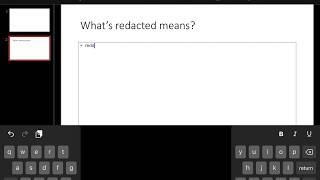Is there a legal basis to redact irrelevant information from documents produced in litigation? As a few court opinions explain, probably not unless there is another good reason to withhold it. But, if there is a basis for redaction, steps should be taken to ensure it is done correctly.
Other than Privileged Information and Attorney Work Product, Right to Redact Limited
It almost goes without saying that privileged information and attorney work product may be redacted. See e.g., Federal Rule of Civil Procedure 26(b)(5). Personally identifiable information (PII) should also be redacted from federal court filings. Fed. R. Civ. Proc. 5.2.
But what about irrelevant information in a document that should otherwise be turned over in litigation? Generally speaking, irrelevant information probably cannot be redacted unless it is protected from disclosure under another rule. As one court observed, “[t]he practice of redacting for nonresponsiveness or irrelevance finds no explicit support in the Federal Rules of Civil Procedure.”
Indeed, a federal court in Wisconsin ordered a litigant to reproduce information because many of the documents originally produced contained redactions. In IDC Fin. Pub., Inc. v. BondDesk Grp., LLC, No. 15-cv-1085 (E.D. Wis. Oct. 26, 2017), the company argued that it had basis to redact the information because it was irrelevant to the case and redacting it protected sensitive business information.
The company’s position did not persuade the court. The court pointed out that despite 2015 amendments to the Federal Rules of Civil Procedure emphasizing discovery proportionality, the rules still permit discovery of information even if it is inadmissible as evidence. The court believed that allowing for the redaction of irrelevant information creates the “potential for abuse” because permitting litigants to unilaterally decide what is germane to a case deprives other parties from seeing information in context and fuels mistrust in the discovery process.
May Be OK to Redact Irrelevant Information If Justified for Other Reason
Rather than relying on the irrelevance of information to justify redaction, parties may be able to persuade a court that redacting irrelevant information is acceptable for other reasons. For instance, in In re Takata Airbag Prods. Liab. Litig., MDL No. 2599 (S.D. Fla. Mar. 1, 2016), the court permitted redaction of irrelevant, but otherwise discoverable information because it was sensitive business information that should not be available to competitors.
If There is a Basis for Redaction, Be Sure it is Done Right
Regardless of the reason supporting redaction, it needs to be done right. If e-discovery software used, redaction is generally straightforward. On most e-discovery platforms, the cursor is used to highlight and select the text to be redacted.
However, there might be more to redaction than just obscuring confidential text contained on document images. Sometimes additional steps are necessary to ensure the data selected for redaction is actually redacted.
When using redaction tools you must “burn” in the redaction. This means that the redaction does more than just obscuring a portion of the document image, but also completely replaces all redacted information in the document-including any searchable text. If redaction is just a layer hiding visible text, it may be possible to remove the layer and view the text, which makes redaction useless.
Another additional step to ensure complete redaction of information is confirming any associated text file does not contain the text that you want redacted. If e-discovery software is used to redact documents, be sure it “re-OCRs” (Optical Character Recognition, which translates images into text characters) any related text files. This ensures that the redactions carry over into the text files associated with your redacted document.
While not as efficient, if you are not using e-discovery software, redactions may also be done in pdf viewers such as Adobe. To create a redaction in Adobe simply click the redaction option and highlight the text you want redacted. Once a redaction is created Adobe will let you know that the redaction has been successfully applied and will ask you if you would like to also find and remove hidden information in your document. Deleting hidden information removes hidden text in the document. Adobe also give you the option to “scrub” the document to remove all metadata, embedded content, attached files, hidden layers, comments, and the like.
We offer redaction services for FOIA and governmental disclosures, document productions relating to litigation and subpoenas. We also redact sensitive personal information and medical information (PII and PMI) for data compliance and data breach remediation.





